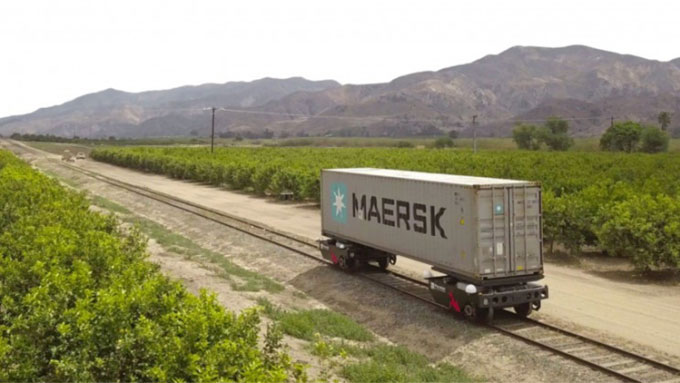Former SpaceX engineers are developing a new cargo electric train model to improve efficiency and reduce emissions in the rail industry.
The transportation sector is currently the largest source of emissions in the United States; however, railroads account for only 2%. Estimates suggest that shifting freight transport from road to rail could reduce greenhouse gas emissions by up to 75%. Additionally, railroads provide an excellent testing ground for autonomous technologies, as the limited movement of trains means there is a lower likelihood of accidents.
The company Parallel Systems, founded by three former SpaceX engineers, has recently raised $49.55 million to develop new autonomous freight cars that they believe will not only enhance the efficiency of the rail industry but also help protect the environment.

A Parallel Systems train car undergoing testing on the tracks. (Photo: Parallel Systems)
“We founded Parallel to expand the market for the rail industry, enhance infrastructure utilization, and improve services to accelerate the decarbonization of freight transport. Our business model is to provide the tools to transition some of the $700 billion road transport industry to rail. The Parallel system can also help alleviate supply chain crises by enabling regular, low-cost freight transport,” shared Matt Soule, co-founder and CEO of Parallel Systems.
Soule left SpaceX in 2019 after 13 years of service. Together with two other former SpaceX engineers, John Howard and Ben Stabler, he began integrating modern software and hardware with existing rail technologies.
Back in September of last year, train manufacturer Wabtec unveiled the world’s first battery-powered locomotive, which boasts power 100 times that of a Tesla electric car. However, Parallel Systems’ autonomous train cars stand out due to their ability to detach and move in different directions while running on the tracks. Each car will have its own power source with a range of approximately 800 km and can be fully charged in about an hour.
A simulation of the Parallel Systems train in operation. (Video: Parallel Systems)
Parallel Systems’ solution utilizes lighter materials and a more aerodynamic design, allowing for greater energy efficiency compared to traditional freight trains. In a press release, the company stated that each of its train cars consumes only 25% of the energy of a conventional tractor-trailer, yet can carry double the payload, up to 58 tons.
Parallel Systems also noted that their vehicles will be equipped with advanced sensors capable of quickly detecting obstacles on the tracks. This, combined with an automatic emergency braking system that reacts ten times faster than traditional trains, will provide a safer transportation solution. The company believes that such benefits in efficiency and safety could persuade stakeholders to transition freight transport from road to rail.


















































